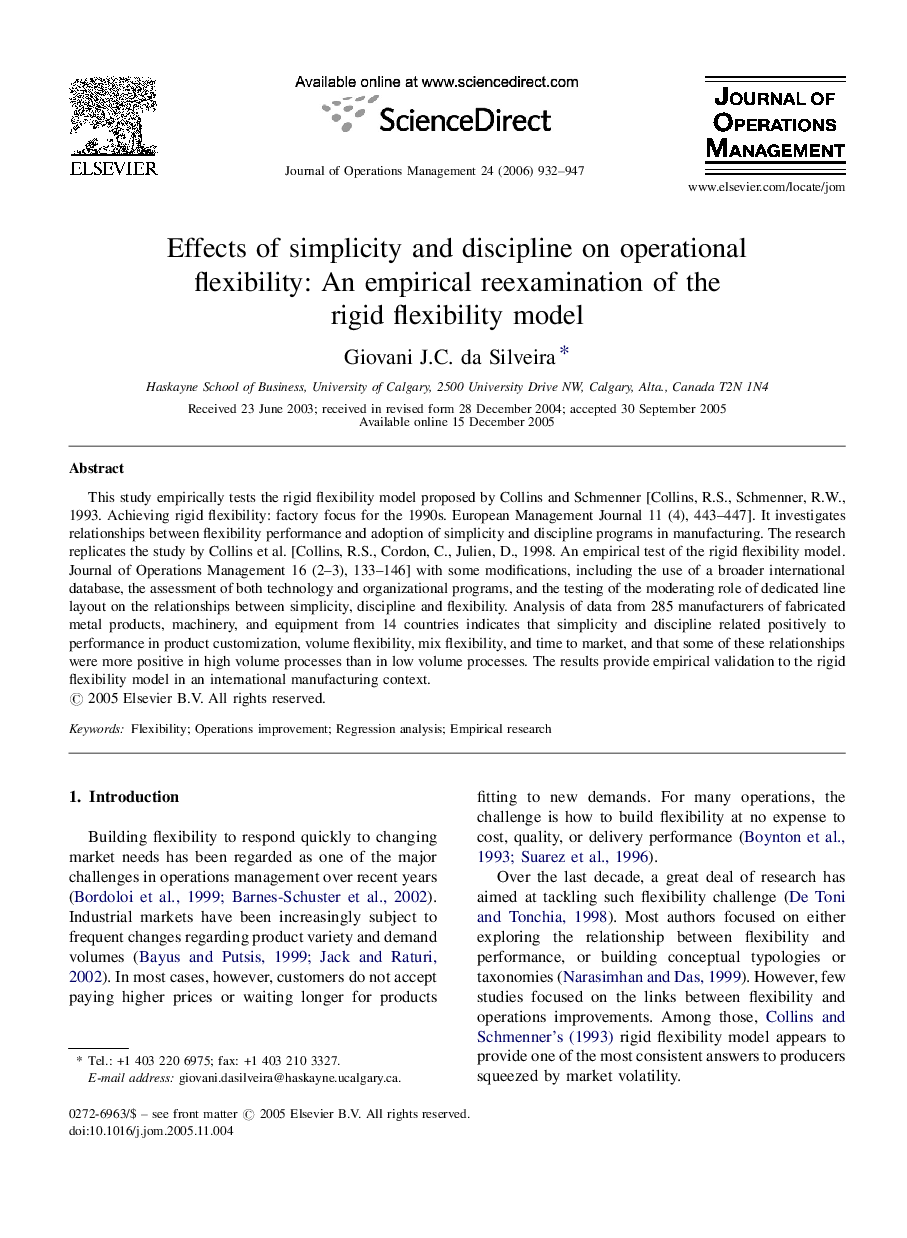| Article ID | Journal | Published Year | Pages | File Type |
|---|---|---|---|---|
| 1032198 | Journal of Operations Management | 2006 | 16 Pages |
This study empirically tests the rigid flexibility model proposed by Collins and Schmenner [Collins, R.S., Schmenner, R.W., 1993. Achieving rigid flexibility: factory focus for the 1990s. European Management Journal 11 (4), 443–447]. It investigates relationships between flexibility performance and adoption of simplicity and discipline programs in manufacturing. The research replicates the study by Collins et al. [Collins, R.S., Cordon, C., Julien, D., 1998. An empirical test of the rigid flexibility model. Journal of Operations Management 16 (2–3), 133–146] with some modifications, including the use of a broader international database, the assessment of both technology and organizational programs, and the testing of the moderating role of dedicated line layout on the relationships between simplicity, discipline and flexibility. Analysis of data from 285 manufacturers of fabricated metal products, machinery, and equipment from 14 countries indicates that simplicity and discipline related positively to performance in product customization, volume flexibility, mix flexibility, and time to market, and that some of these relationships were more positive in high volume processes than in low volume processes. The results provide empirical validation to the rigid flexibility model in an international manufacturing context.
